Run by Dr. Domenic Iacovone and elite fitness trainer Matt Jansen, Revive MD has shaken up the sports supplement industry with issue-specific health formulas that bring incredible clinical dosages. Some prime examples are Revive MD Lipid, Heart, and Prostate. The line is targeted towards high-end athletes, and early on in their career, most other brands in the industry ignored or downplayed the idea, continuing short-termed focus on pre workout supplements and candy flavoring.
Yet, Revive MD's monstrous success showed that high-end athletes do care about their whole body health and not just their looks or performance. With the brand's rise, we're now seeing those same naysayers copy Jansen and Iacovone's model and formulas left and right.
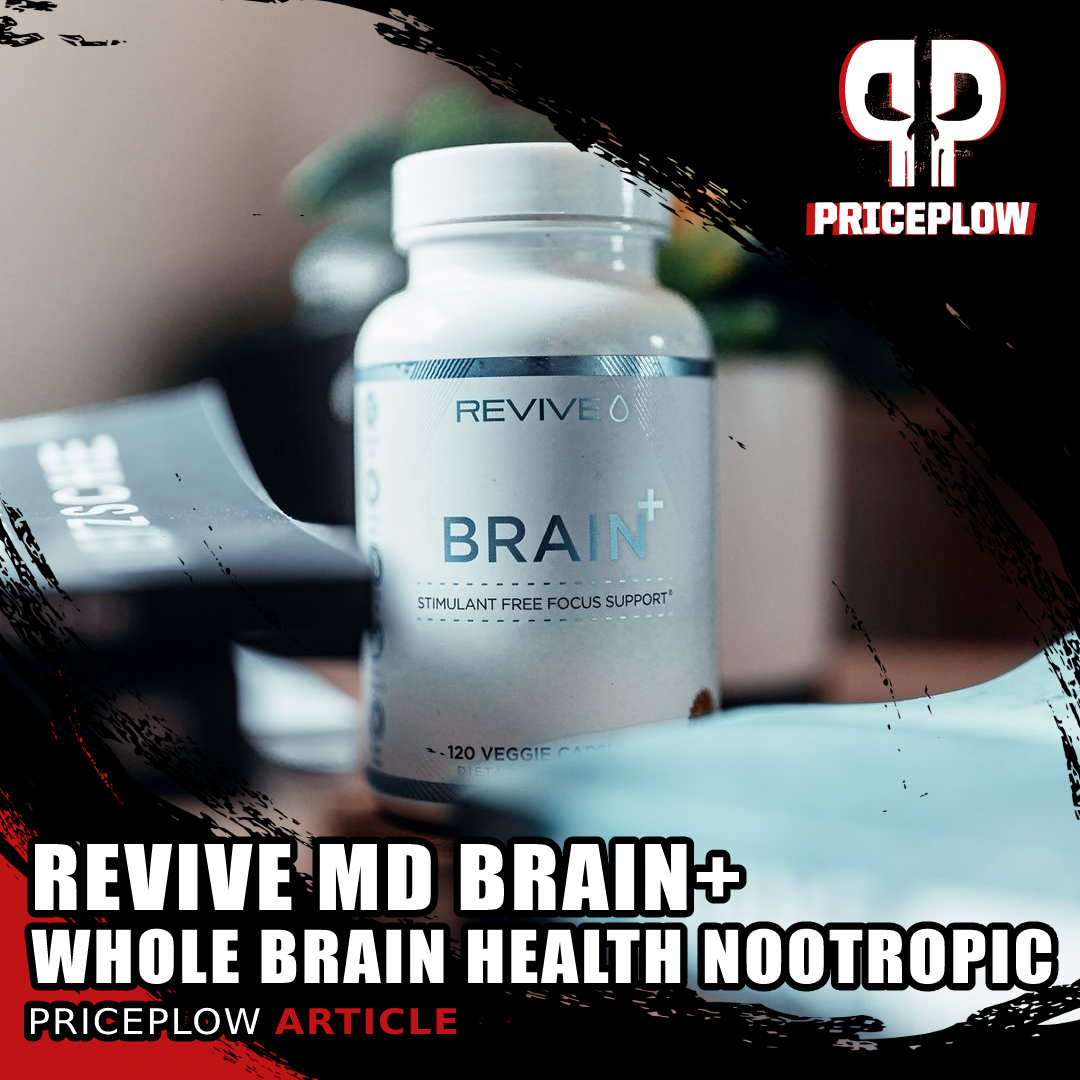
Not just a "nootropic" for focus, Revive MD's Brain also works on mood and general well-being alongside the cognition boost!
This time, however, Team Revive is taking a page out of the industry's playbook - developing a nootropic supplement meant to improve cognitive performance - but they're bringing their whole health ethos into the fold.
Revive MD Brain: A new look at whole brain health
With formulas like Heart and Prostate, it was only a matter of time before the BRAIN became a focus. Revive MD is making the Brain+ nootropic their way -- by focusing on whole brain health and cognitive function.
A brain health nootropic with lithium?! Get in here!
On top of standby favorites like choline, carnitine, phosphatidylserine, and tyrosine, Brain+ adds some punch from Rhodiola rosea and a high-quality blend of B-vitamins (the good ones)... and even has some lithium added!
It's stimulant-free to boot.
There's even more than that, so we dig deep into the label below, but first, make sure you check our coupon-backed prices and sign up for PricePlow's Revive MD alerts, they've got far more on the horizon:
Revive MD Brain+ – Deals and Price Drop Alerts
Get Price Alerts
No spam, no scams.
Disclosure: PricePlow relies on pricing from stores with which we have a business relationship. We work hard to keep pricing current, but you may find a better offer.
Posts are sponsored in part by the retailers and/or brands listed on this page.
This area is reserved for Team PricePlow's upcoming Ingredients video.
Subscribe to our channel and sign up for notifications so you catch it when it goes live!
Revive MD BRAIN+ Ingredients
Get ready to pound through ten sets of ingredients in Brain+, all of which come in four capsules. There's no caffeine, so you can stack with your coffee, energy drink, fat burner, or pre workout.. or just take them solo.
In the article, we're going to combine the B-vitamins in their own area, and the two choline sources as well.
-
High-Bioavailability B-Vitamins
The first thing to recognize on this label is that the B-Vitamins are from quality sources.
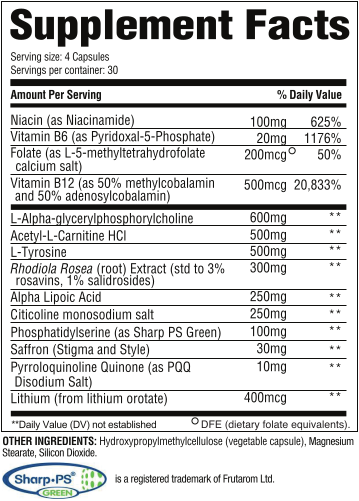
Brain+ is the first nootropic we've covered with lithium added - but there's clearly so much more. This article starts with the high bioavailability B-vitamins that too often get overlooked.
-
P5P over Pyridoxine!
For instance, we have Vitamin B6 from Pyridoxal-5-Phosphate (P5P), as opposed to pyridoxine -- the latter of which can be oversaturated and cause severe sensory neuropathy.[1] Cheaper pyridoxine actually inhibits B6-dependent enzymes within the body, ultimately limiting absorption![2] P5P (pyridoxal-5′-phosphate or PLP), on the other hand, is the form of vitamin B6 that the body actually uses – this form of vitamin B6 leads to energy conversion, metabolic functioning, and neurotransmitter signaling.[3] It's readily dephosphorylated and easily absorbed.[4]
Long story short - cheaper vitamins may actually reduce your ability to process said vitamins - and that's not good for the brain. Not here with Brain+.
At 20mg (1176% recommended daily value), your vitamin B6 should be well-covered for the day.
-
Active Folate Source in 5-MTHF
Similarly, for our folate source (something most brain health supplements don't provide at all), we have L-5-methyltetrahydrofolate (5-MTHF) rather than folic acid. Folate is critically important for DNA synthesis and repair, cell division, red blood cell maturation, and homocysteine / methionine conversion.[4] Like P5P above, 5-MTHF is the active form used in the body.[5]
The issue with standard folic acid supplementation is that it requires the methylenetetrahydrofolate reductase (MTHFR) enzyme that converts folic acid to 5-MTHF. Genetically, however, not everyone has the ability to convert great amounts of it.[6,7] This can lead to methylation issues or folate deficiencies (alongside lower SAMe levels and too much homocysteine), causing numerous issues - cognitive and otherwise. The solution is to use the active form - 5-methyltetrahydrofolate - like Revive MD is here.
Note that this is a 50% daily value dosage, so hopefully you're getting more folate elsewhere in your day.
-
Methylcobalamin as the Vitamin B12 Source
Once again, Revive opted for a better vitamin source - in this case, we're getting Vitamin B12 from Methylcobalamin. Here, we have a vitamin bound to a methyl group as opposed to a cyanide group in the cheaper alternative, cyanocobalamin, which is often seen on other supplement labels. When looking at multivitamins, the Vitamin B12 source is our first litmus test - and even though Revive MD Brain+ isn't a multi, it definitely passes the test by skipping the cheap ingredients and using quality compounds.
With B12 supplementation, we're trying to avoid deficiency, which can lead to cognitive impairment, depression, neurological issues, anemia, and hyper-homocysteinemia.[8] Research has demonstrated that given the complementary functions of vitamin B12 and folate, it's smart to take them together,[8] as we are here.
The "cyano" part of cyanocobalamin stands for cyanide, which your body must work to remove when ingesting this form of B12. It's not deadly at standard doses, but it does put your body through extra work. No need to worry about that here
Worth noting that we have a smashing 500mcg dose worth 20,833% minimum daily value - there shouldn't be any B12 deficiency anytime with Brain+ users!
-
Niacin
Finally, we have a solid 100mg dose of Niacin, which is 625% daily value. There are several uses for niacin in the body, yielding numerous metabolic benefits when supplemented to avoid deficiency. But in terms of cognition, we're looking at how it is used as a substrate for NAD+ production,[9] yielding improved energy states. It's also used to prevent age-related decline,[10] although that line of research requires more data.
Mitochondrial health will become a persistent issue on the Brain+ label, as you'll see with other ingredients like PQQ and ALCAR.
-
-
Lithium (as lithium orotate, yielding 400mcg)
This is the first time we've covered lithium added to a nootropic supplement, but it's here for a great reason. Many may think of this as being used as an antipsychotic drug, but in this form, it's not even a drug. Lithium is simply a mineral - and an essential one at that.[11] The long story short is that lithium is a mood stabilizer.
Lithium is found in fish, meat, dairy products, eggs, tubers, and other vegetables. Daily intake is generally 2 - 600 micrograms, depending on diet and locale.
It was first discovered to treat psychosis in 1949,[12] and in 1970, the US FDA approved high dose lithium carbonate and lithium citrate as prescription drugs to treat bipolar disorder, with several successful clinical trials on those drugs over the past several decades.[13]
There is fascinating research covering lithium and its deficiency - for instance, a study conducted on 27 Texas counties from 1978-1987 found that counties whose water supply contained little or no lithium had significantly higher rates of suicide, drug addiction, and violent crimes![14] This was further demonstrated in 2013, once again in Texas -- less lithium in the water correlated to more suicide.[15]
A similar study in Japan also showed that greater lithium levels in the water led to less suicide,[16] and other research from Japan has led researchers to conclude that low-dose lithium uptake promotes longevity in humans and metazoans, which is actually the title of the paper.[17]
Lithium supplementation in former drug addicts and alcoholics not only significantly prevents relapse, but it also improves overall mood, energy, and levels of happiness and friendliness in such populations.[18,19]
Data like the above, as well as several meta-analyses, led researchers to hypothesize that low levels should be given to the general population in all drinking water,[20] but that is obviously controversial, and most readers would prefer to supplement it themselves.
How does lithium work?
On the note of blood levels, Revive MD is now offering free blood tests!
Recent research has shown that lithium inhibits glycogen synthase kinase-3β (GSK-3β),[21] and with that, we see an upregulation of brain-derived neurotrophic factor (BDNF) and IGF-1, the former of which stimulates new neuron production in the hippocampus. GSK-3β inhibition yields anti-depressive behavior in rats,[22] so pointing to this mechanism seems to be on the right track.
The mineral also increases the brain's production of bcl-2, a neuroprotective protein,[23] and that is something that most (if not all) medications cannot do.
This means that we not only see a prevention of neuronal cell death, but improved neuron production with adequate amounts of lithium!
However, without getting your water and food tested, you may not know if you're getting enough. 400mcg of lithium orotate is a nice low dose for beginners. We see supplements at far higher doses, but for those new to taking this mineral, this is a good place to begin.
Now, on to the active ingredients in Revive MD Brain+:
-
Choline Blend: 600mg Alpha-GPC 50% and 250mg Citicoline
Acetylcholine is synthesised from the compounds choline and acetyl-CoA. Image courtesy of the University of Bristol
BRAIN+ has a fantastic blend of two sources of choline - and they're the two highest-bioavailability sources at that! We have a clinical dose of 600mg Alpha-GPC combined with an additionally impressive 250mg citicoline.
Choline is critically required to help maintain structural integrity of cell membranes,[24] and is also a precursor to other compounds in the body. One compound is actually a neurotransmitter called acetylcholine, and it's dubbed the "learning neurotransmitter" due to its importance in the brain's synaptic system and high involvement in cell-to-cell communication (it's found in high concentrations in neuromuscular junctions).[25]
Acetylcholine thus improves coordination, balance, memory, learning, attention/alertness, and even a "mind-muscle connection" when working out.[26,27]
Choline deficiency is on the rise, and with that comes major health issues such as fatty liver disease, organ/muscle damage, and general brain fog.[28]
The solution, outside of the obvious one of eating more meat, fish, and eggs, is to supplement. The two highest-bioavailability forms on the market are in MD BRAIN+ - Alpha-GPC and Citicoline. We often are pressed to choose one over the other when looking at choline-based supplements... Revive MD makes that easy by including both.
-
Alpha-GPC: Crossing the blood brain barrier
Scientifically known as alpha-glycerylphosphorylcholine, a highly-bioavailable form that can be quickly absorbed, Alpha-GPC can cross the blood brain barrier, helping to synthesize more acetylcholine after its conversion to phosphorylcholine.[29] In recent years, a lot of research has shown it increasing not just cognition, but also power and performance - and at the doses included in BRAIN+![30-33]
-
Citicoline: increased norepinephrine and dopamine levels
Meanwhile, citicoline, also known as Cytidine 5'-Diphosphocholine and CDP-Choline, has some tricks of its own beyond acetylcholine production support. Citicoline can increase norepinephrine and dopamine levels, and even boosts dopamine receptor density.[34]
Overall, this blend is fantastic, and we're very confident that most users would be feeling this mix on its own, let alone all the other ingredients inside!
-
-
Acetyl L-Carnitine - 500mg
We often see various forms of carnitine in fat burners, as it helps with fatty acid transport to the mitochondria,[35] the cell's "powerhouses". You can't burn it if you can't transport it, after all. Carnitine is found in meat, so similar to the choline sources above, the best results will come in vegans and vegetarians.[36,37]
Synergy! If you're low on acetyl groups, your choline (from Alpha-GPC) may not get to the acetylcholine that you want. ALCAR helps with that bottleneck.
This is great, but why in a nootropic? Because the additional acetyl group in Acetyl L-Carnitine enables it to cross the blood brain barrier![38] ALCAR can thus increase focus, boost memory recall, and provide some neuroprotection.[39-41]
Anecdotally speaking, 500mg is just on the lower end of where we start "feeling" it. Many of the athletic-minded studies dose it at 2g/day,[42] so if you're an aggressive Revive MD style athlete, eat your meat and even consider a bit more for more recovery!
-
L-Tyrosine - 500mg
Revive MD's Zinc is out, and it brings 50mg elemental zinc from OptiZinc (zinc monomethionine). Read our article to understand why they picked OptiZinc.
L-tyrosine is an amino acid that functions as a precursor to several of our favorite neurotransmitters like norepinephrine, epinephrine, and dopamine.[43]
When levels of catecholamine neurotransmitters - specifically norepinephrine - are too low, we generally have impaired cognitive and physical performance. However, supplementing L-tyrosine in stressful situations can increase production and help cellular firing, improving performance.[44]
Several studies have shown that L-tyrosine increases plasma tyrosine levels better than alternative forms,[45] so it's great to see Revive MD using it. Similar to ALCAR, 500mg is the dose where we anecdotally begin feeling it, although we've seen pre workout supplements with far more.
-
Rhodiola Rosea (root) Extract (std to 3% rosavins, 1% salidrosides) - 300mg
Our favorite herb, Rhodiola rosea is a phenomenal adaptogen that gets key brain chemistry levels in proper order. It functions on serotonin,[46] and several research studies have shown it lead to improved mood states.[47]
Mechanistically, Rhodiola seems to spike long-term potentiation (LTP) of synaptic transmission in the hippocampus,[48] generating its interest for use in nootropics. The effects actually began working at the given standardization as well - 3% rosavins and 1% salidrosides.[48]
In just 14 days, 200 milligrams of Rhodiola rosea extract (less than what we have here) saw significant reductions in anxiety, stress, anger, confusion, and depression, with overall mood improvements reported.[49] Another study on 101 subjects taking 200 milligrams twice per day reported reduced stress, and it began working within three days of taking it![50]
For the Revive warriors out there, Rhodiola reduces both mental and physical fatigue at both lower doses (100mg for 20 days)[51] and higher doses (370mg or 555mg).[52]
Note that Rhodiola functions as an MAO inhibitor,[53,54] and should not be combined with pharmaceutical drugs such as SSRIs, although the dopamine-prolonging effect is generally great for those of us not on such drugs.
We've long believed that more nootropics should have Rhodiola, and here it is in BRAIN+. We detail these studies, the mechanism, and far more about this fantastic herb in our article titled Rhodiola: The Salidroside-Powered Adaptogen of the Vikings.
-
Alpha Lipoic Acid - 250mg
Alpha Lipoic Acid (ALA) is an organosulfur compound that's essential for proper functioning of aerobic metabolism. We see supplements include ALA for various reasons, but it's most often used for its antioxidant effects and support in blood sugar and aging control.[55]
However, it's about time we saw a solid dose in a nootropic, because there are cognitive benefits as well!
Improved glutathione (antioxidant) status in neurons
First, ALA enhances glutamine production through the enzymatic activity of glutamine synthetase in astrocytes, and helps them take more glutamine in.[56,57] Because of its ability to nudge glutamine levels up, ALA improves glutathione levels in neurons by 40%.[56] The neurons use this glutathione to fight "neurotoxic events", especially glutamate excitotoxicity, a state where too much glutamate overstimulates cells and causes long term damage.
With this mechanism, ALA has been shown to protect against conditions like seizures and cyanide toxicity.[58,59]
Choline, Dopamine, Norepinephrine, and Nerve Recovery!
Even better, ALA may enhance the reuptake of acetylcholine in a similar fashion.[60] Low-dose ALA boosted dopamine and norepinephrine levels in the hippocampus by roughly 10% in one trial.[60]
So while we don't see it in nootropics a lot, the blood sugar protection alone is worth a look (less blood sugar "rollercoasting" leads us to improved long-term focus), but the synergy with our choline blend makes it even more appealing inside.
You can also find ALA in Revive MD's Glucose supplement.
-
Phosphatidylserine (as Sharp PS Green) - 100mg
Phosphatidylserine is a fat-soluble amino acid mostly found in the brain that helps support cognitive function. Many research studies have shown that consuming it helps to prevent symptoms of declining mental function and even depression in elderly populations.[61-64]
Beyond that, there are studies showing it's effective at decreasing stress and anxiety.[65] At high enough doses greater than what we have here, it can reduce cortisol levels.[66]
For the Revive MD athletes out there, it gets better: some research has shown that phosphatidylserine may improve exercise endurance for athletes,[67] but that was again at higher doses. Something for the endurance athletes to look into, though.
-
Saffron (Stigma and Style) - 30mg
Another unique addition to Revive MD Brain+ is saffron (scientifically known as Crocus Sativus L.), which is most often used in the supplement world due to its appetite suppressing effects. This is similar for Rhodiola, listed above, both of which improve serotonin levels in the body.[68]
As such, there has been an incredible amount of research with regards to saffron decreasing symptoms of depression, and most studies are at this 30mg dose![69-73]
These effects lead us to understand how it's successful in appetite suppression (although we'd still always argue for a more nutrient-dense diet), but lead us to believe that it's better suited in a brain health supplement that targets overall brain health - exactly what we're taking here.
-
Pyrroloquinoline Quinone (as PQQ Disodium Salt) - 10mg
Interesting: 20mg daily PQQ supplementation provides all kinds of cognitive and mental benefits. We should cover this more often!
Known as PQQ, this small molecule does several incredible things in the body, and while it's often touted as an anti-aging mitochondrial booster, it's the cognitive health effects that deserve more attention. Research has shown that PQQ increases cerebral blood flow and oxygen metabolism, resulting in enhanced cognitive function.[74]
PQQ works by helping you generate more energy via mitochondrial biogenesis activation.[75] This means that it can help you create more mitochondria[76] - and that improves brain health as well as muscle and metabolic function!
This leads to a form of "clean energy" that you don't get with stimulants - and it has been shown to decrease fatigue and lower stress while it does so.[77]
We don't see it often enough because it's not the cheapest ingredient, but any Revive MD fan knows that the brand spares no expense when it comes to working ingredients.
BRAIN+ Dosage
Revive MD suggests taking 4 capsules per day. We'd generally recommend this in the morning, but some may want to test taking 2 in the morning and 2 mid-afternoon before the "slump". This will help space out the ingredients and bring some potential sleep improvements to boot.
Revive MD educates the market... again
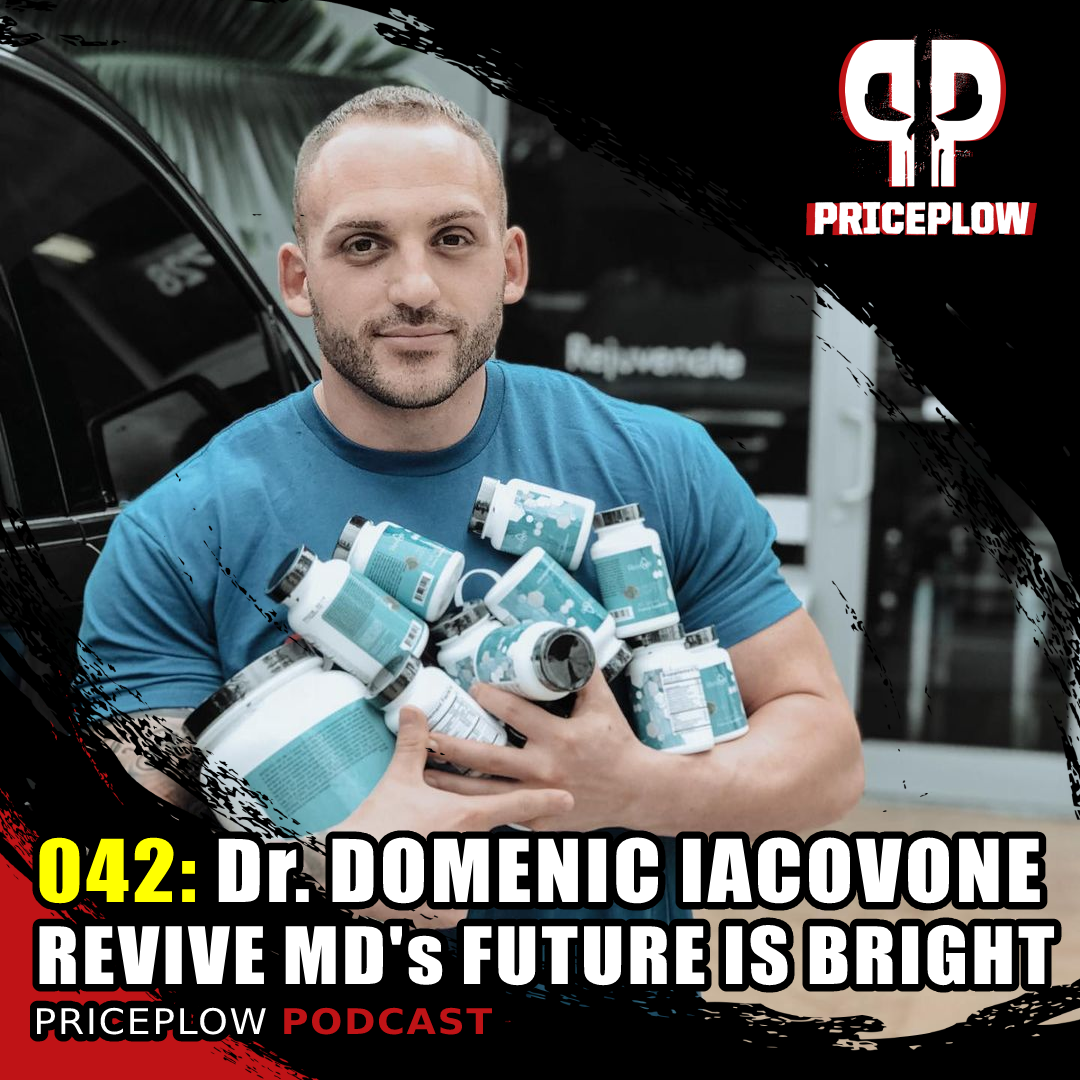
Revive MD comes out swinging in 2021! Learn about it in Episode #042 with Domenic Iacovone
Now that's what we call a brain health supplement. You may have come here expecting a "nootropic" geared towards cognitive focus. Those benefits are great, and they're included in this supplement, but there's also so much more.
On top of straight "focus", we also have mood enhancement, stress support, deficiency protection, and prevention against cognitive decline. One of the best things to pair with this, on top of any organ-specific supplements you like from the brand, could simply be the Revive MD Omega-3 supplement. Those looking to hit the anti-anxiety angle harder may also enjoy Revive MD Calm. There's not much else here that isn't covered in terms of getting your brain back on track.
Nootropic "newcomers" in saffron and lithium meet our "standard" ingredients in choline and carnitine, and with the help of Rhodiola and some others, Revive MD BRAIN+ should be unlike anything you've felt in a cognitive supplement ever. Sign us up.
Revive MD Brain+ – Deals and Price Drop Alerts
Get Price Alerts
No spam, no scams.
Disclosure: PricePlow relies on pricing from stores with which we have a business relationship. We work hard to keep pricing current, but you may find a better offer.
Posts are sponsored in part by the retailers and/or brands listed on this page.

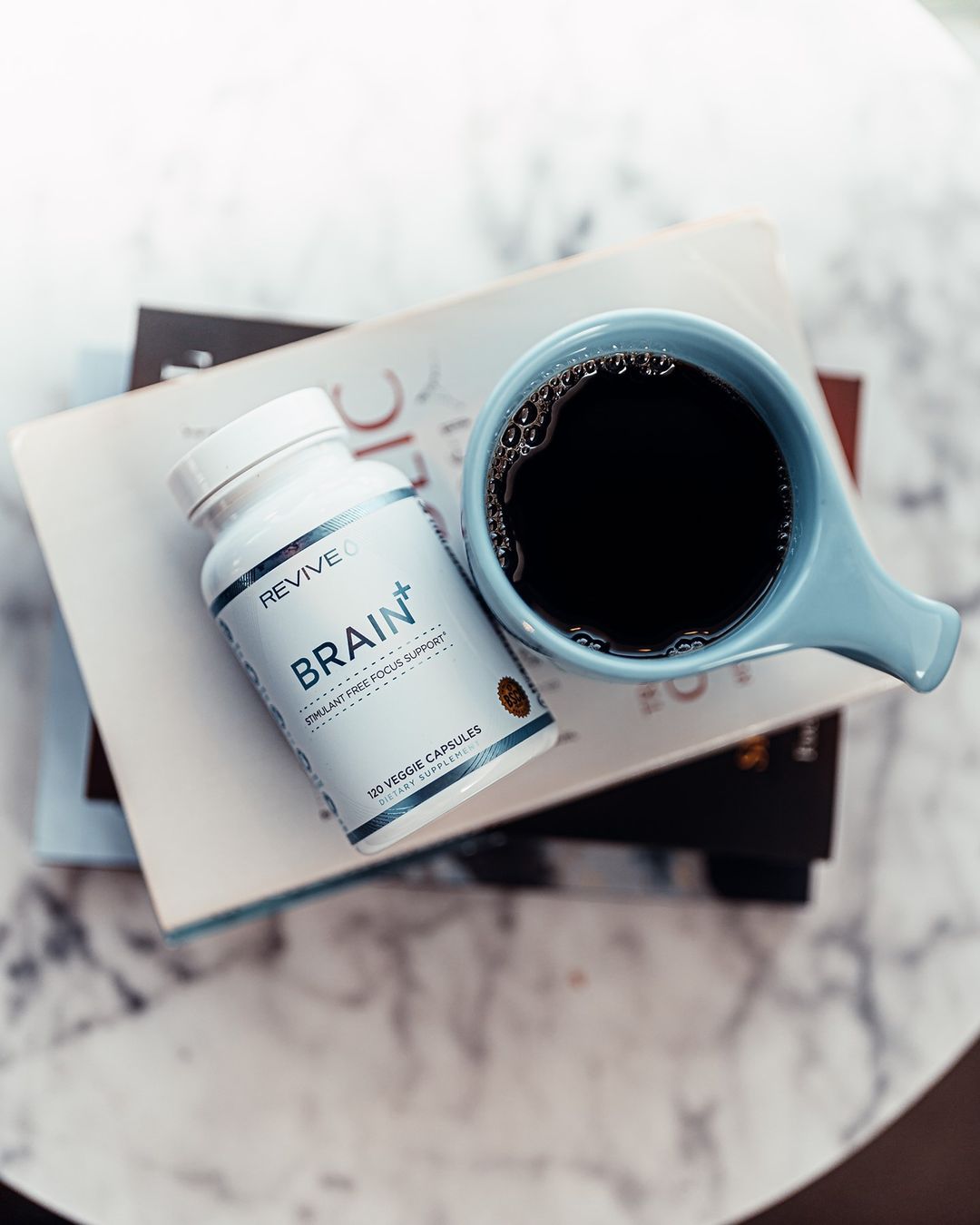
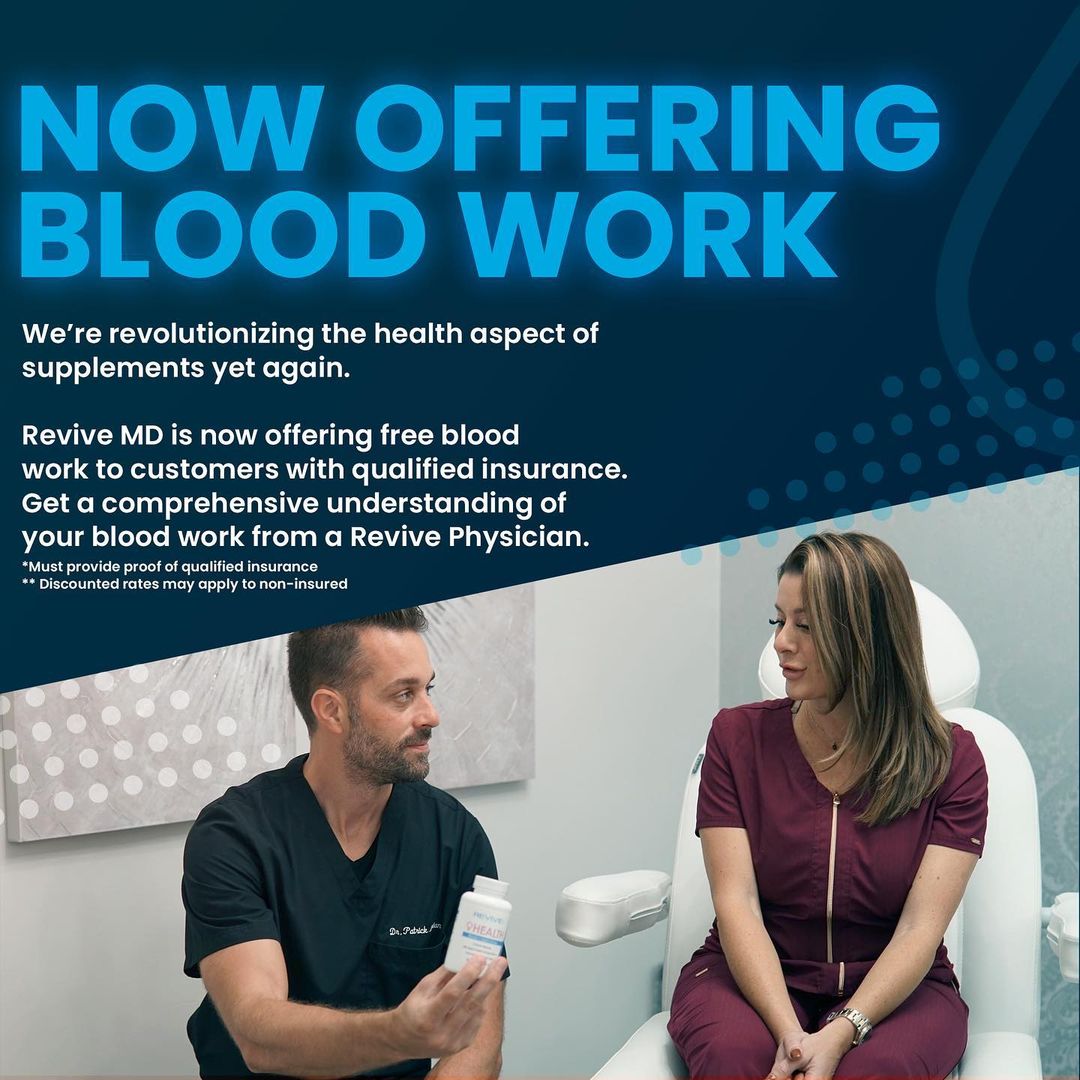
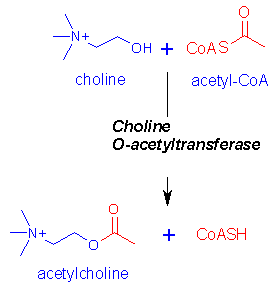
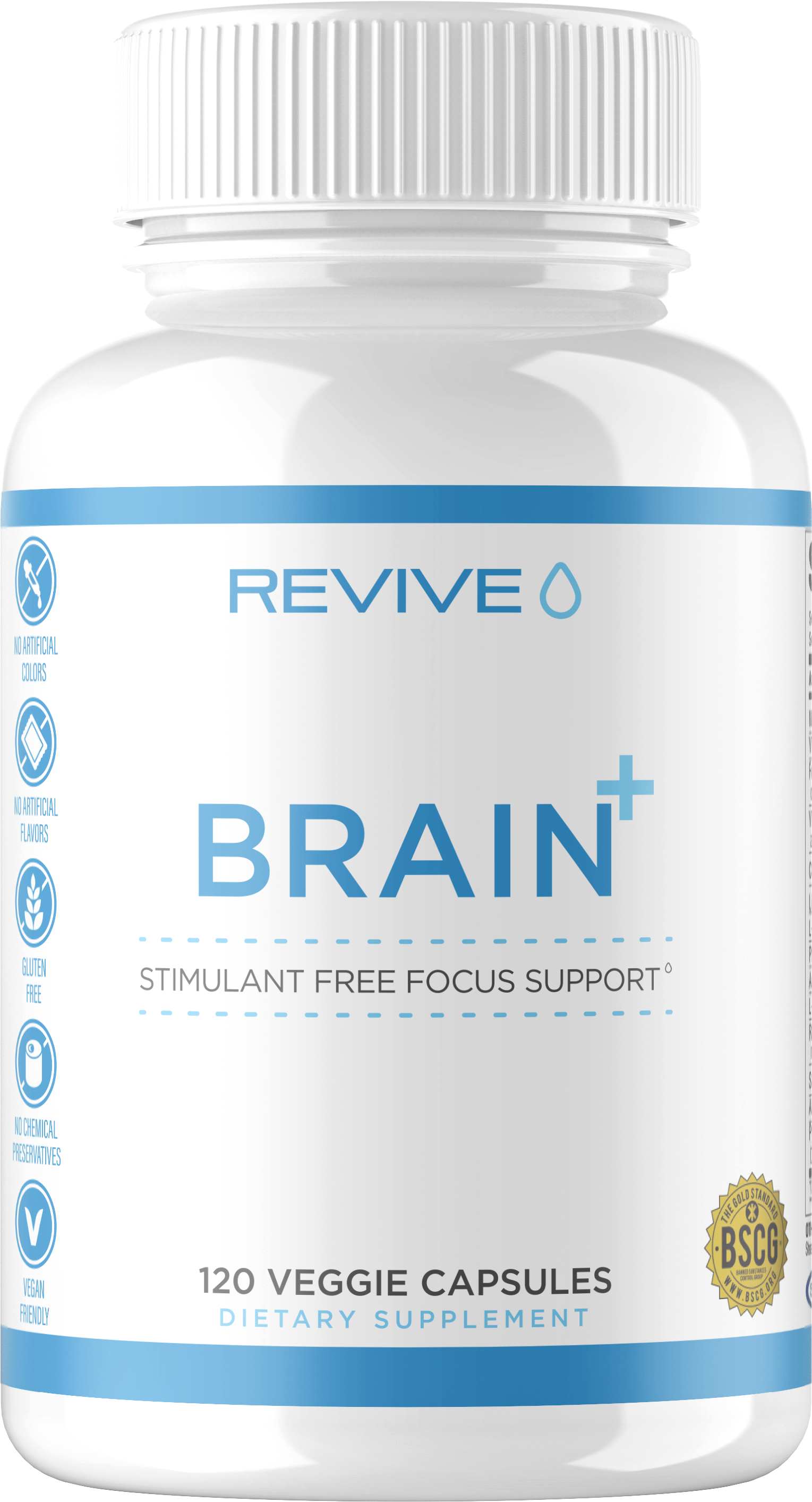
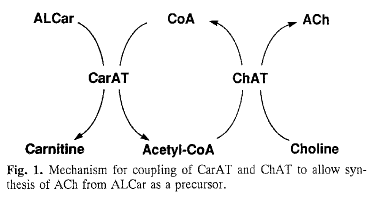
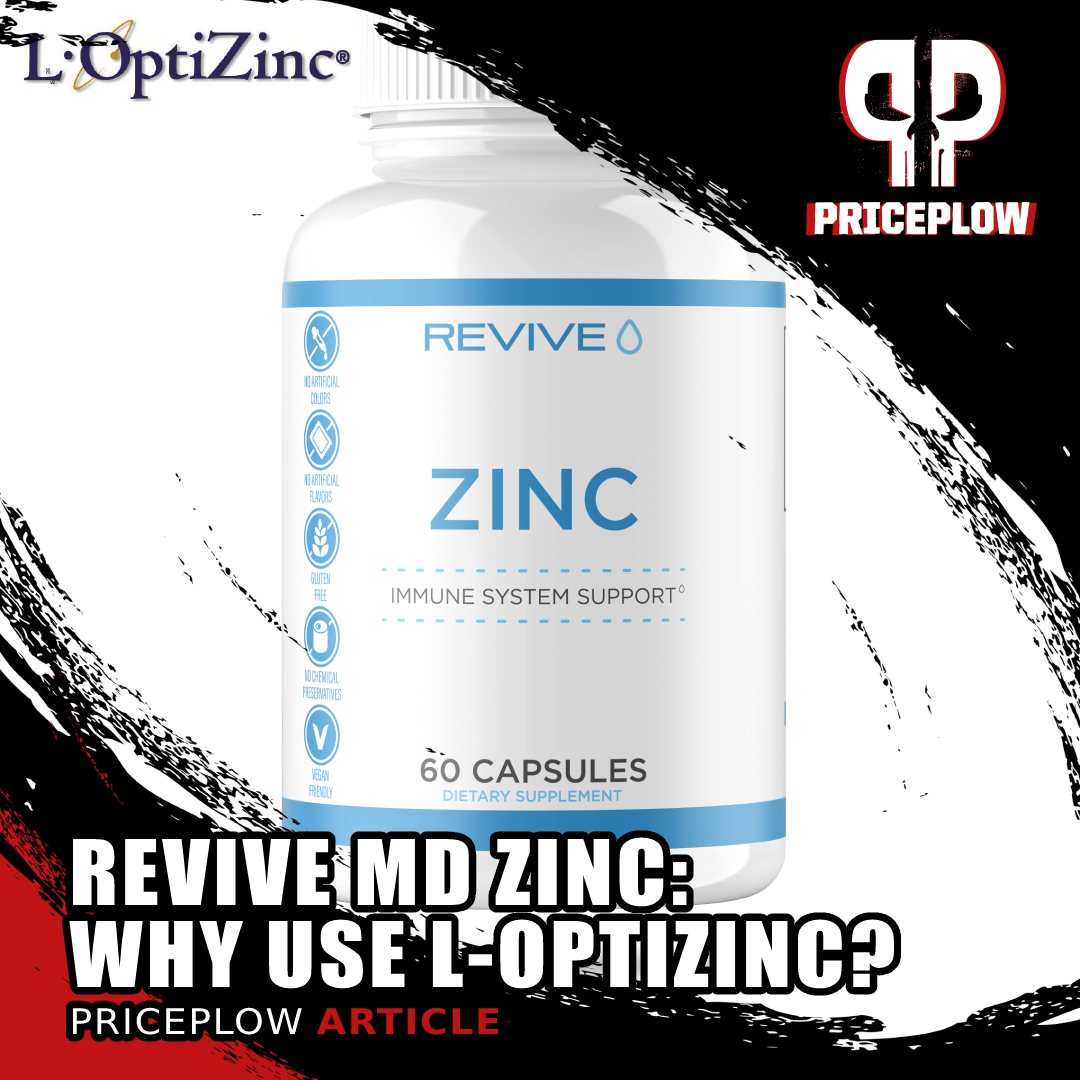
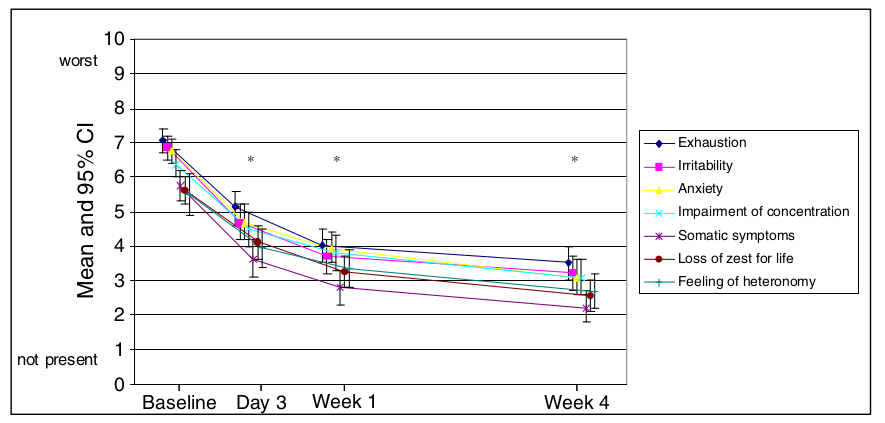

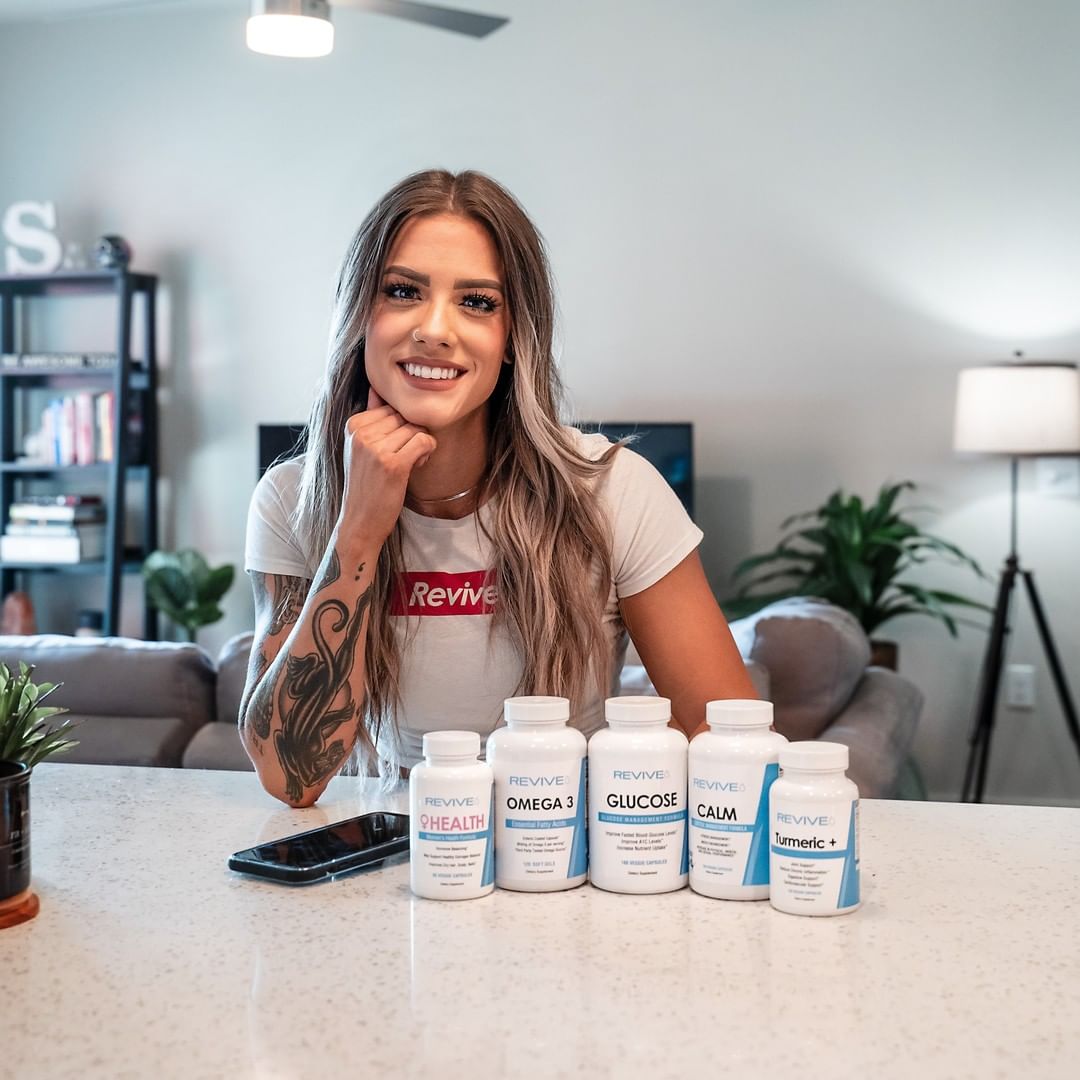
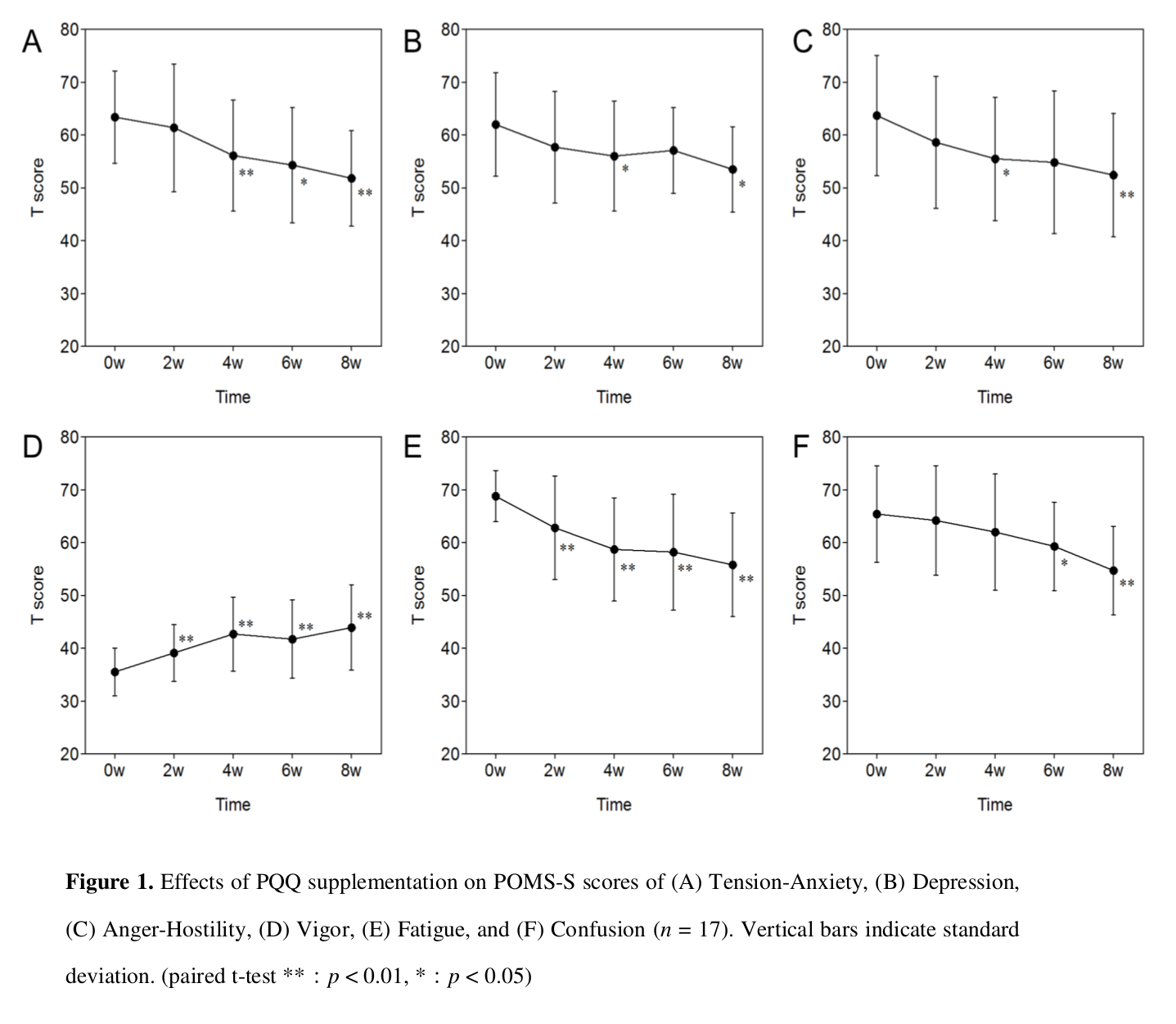


Comments and Discussion (Powered by the PricePlow Forum)